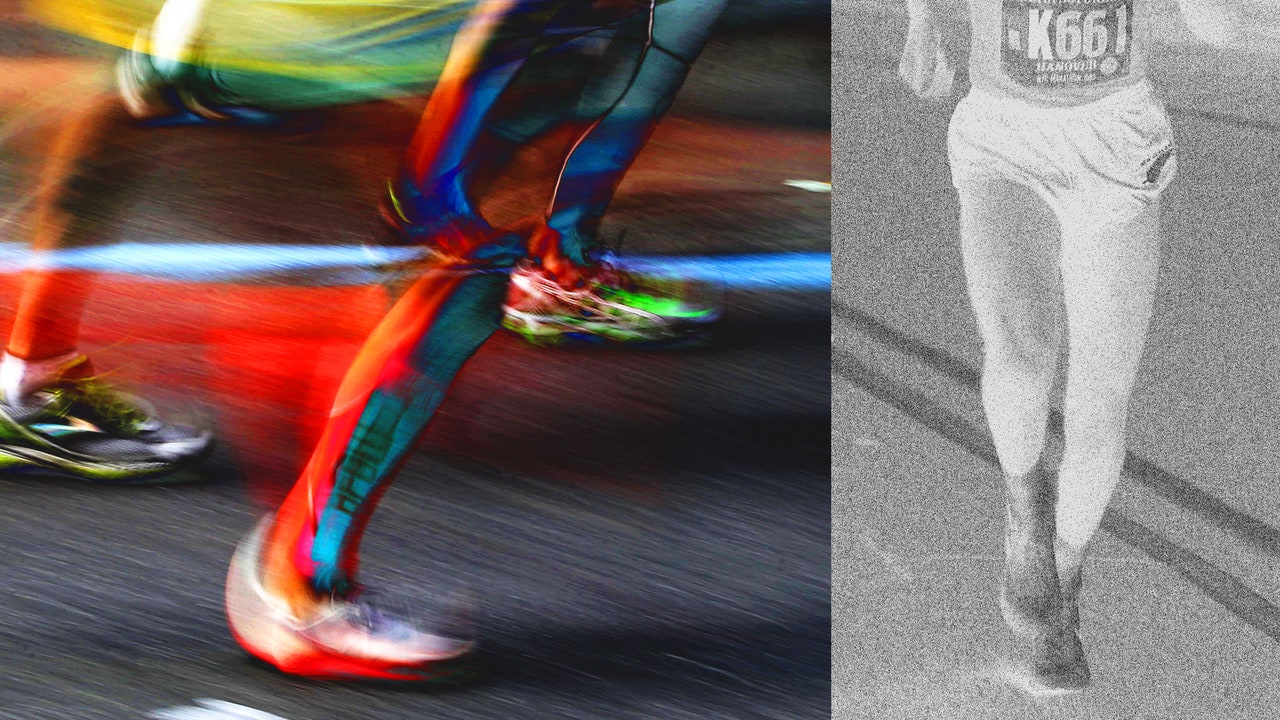“Next week, go for 45 seconds on, two minutes off. Or stay at 30 seconds on, but only 90 seconds off,” says Robinson, who recommends only changing one variable each session. After six weeks, return to your original interval lengths—now you’ll be able to hit those work periods at a faster clip—and start the cycle again.
Threshold sessions
One of the things that holds us back from running faster is lactic acid—the culprit behind that burning sensation you feel in your legs during high-intensity efforts. The point at which that occurs, when your body is unable to process lactic acid as fast as it produces it, is known as your lactate threshold. So the purpose of threshold runs is to nudge that threshold higher and higher each week, allowing you to sustain a harder, and subsequently faster effort without crossing that tipping point and burning out.
“You are running at a speed that is challenging, but it’s not like you’re sprinting. You want to find that zone,” says Leo Harmon, Jr., PT, DPT, clinic director at Pappas OPT, who holds the Middle Atlantic Conference and Widener University record in the 800 meters.
James prescribes threshold runs as two bouts of 15–20 minutes, separated by a five-minute easy recovery. If you’re just getting started, you could even break it into three rounds of eight minutes. “Your goal is to be able to increase the length of time that you’re doing those week after week,” says Dr. Hamon. “You’re also learning how to run while you’re uncomfortable, and how to maintain that pace without feeling mentally like you need to quit.”
Two more types of runs to know about
Long runs
A long, slow run might not seem like something that would be useful for increasing speed, but covering a long distance once every other week will help build stamina and also contribute to your overall training volume, which will support your speed sessions. Mentally, getting used to longer distances will also help you put shorter runs and races into perspective.
“You want your body to get accustomed to running for longer distances than you’re going to actually race at,” says McKenzie. “If you’re training for a 10K, but you’re working your way up to running 15 miles at a time, that 10K will feel much easier. So you always want to have at least one long and steady distance day. You’re not trying to push the pace, you’re just trying to keep going and not have any breaks.”
“Getting speed is about getting faster and stronger for longer. Those are the three principles that we’re talking about,” says Robinson. “Faster: That’s your interval training—the shorter stuff that’s going to increase your economy. Stronger: Those are your threshold runs. And then longer: That’s your long run.”
Easy runs
“Speed training is a dance,” says Robinson. “It’s important to have those three principles as the bedrock, but if that’s all you do then you’re not including any recovery runs.” Taking your foot off the gas a few times a week to run a relatively short distance at a casual pace is not only a good form of active recovery, but also a good way to stay in touch with what you love about running. These can be fun runs, or even social runs, says Robinson. “That’s what’s great about this explosion of run clubs. In addition to meeting new people and unlocking our urban environments, the social aspect of running actually makes us better runners—and potentially better people.”
Just remember to keep your easy runs easy. “Taking it easy on the easy days will allow you to run hard on the days when you’re supposed to run hard,” says James. “Otherwise it all just becomes a moderate effort, because that’s all you can manage, because you’re still tired from the run before. Each run should have a purpose. It might just be that it makes you feel better—and that’s a perfectly valid purpose.”

